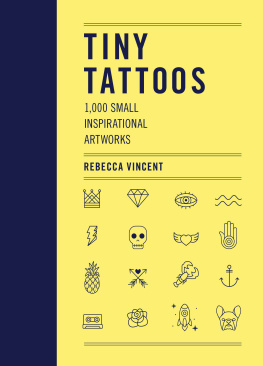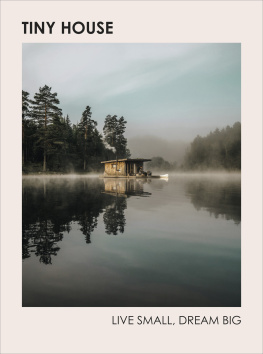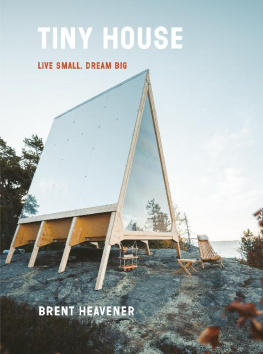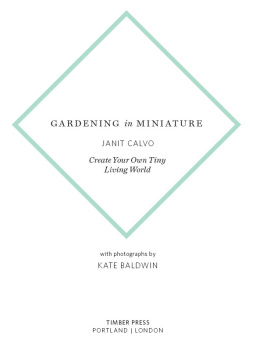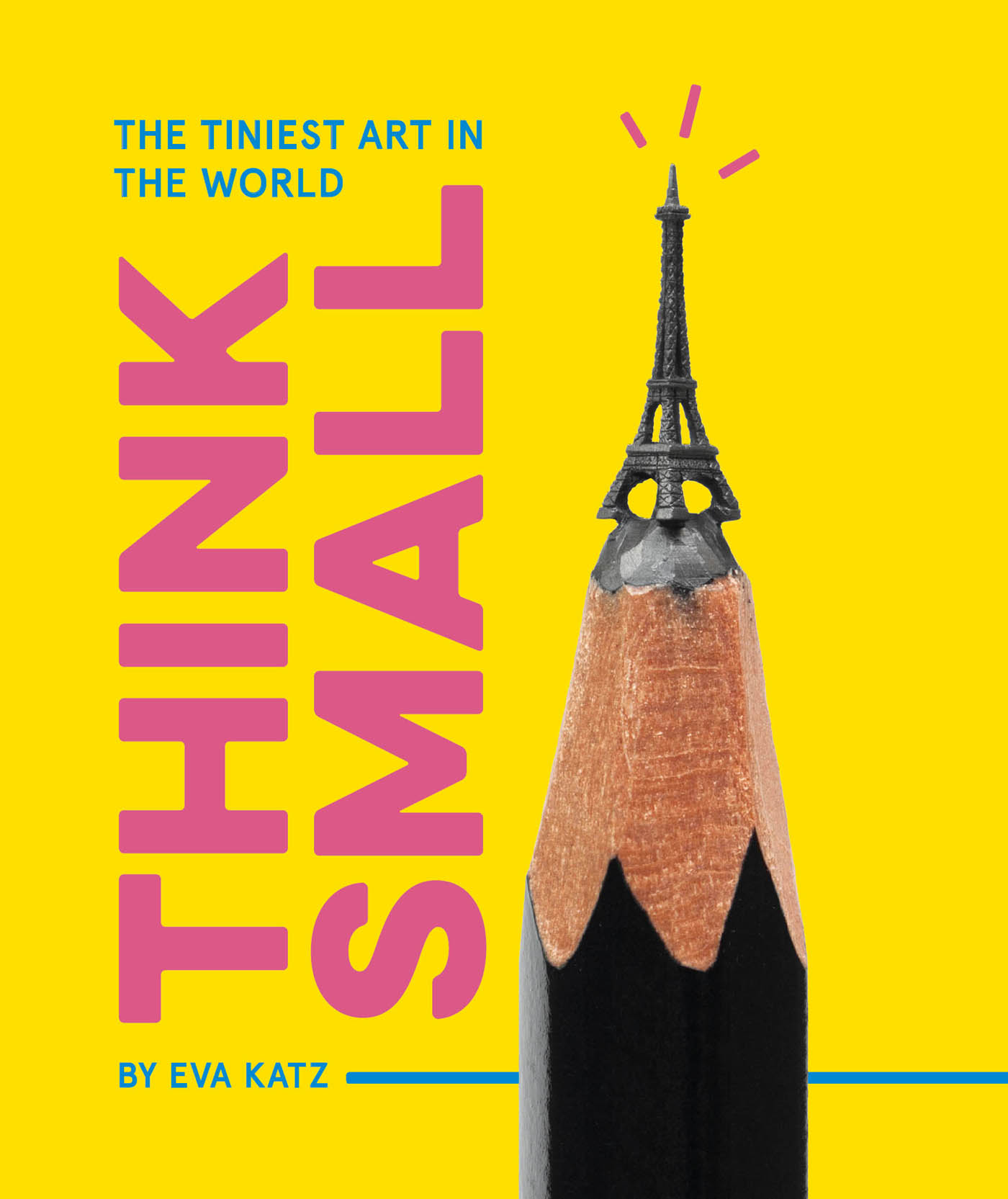



Text copyright 2018 by Eva Katz.
All artwork copyright by the individual artists.
All rights reserved. No part of this book may be reproduced in any form without written permission from the publisher.
ISBN: 978-1-4521-5817-4 (epub, mobi)
Library of Congress Cataloging-in-Publication Data available.
ISBN: 978-1-4521-5696-5 (hc)
Design by Lizzie Vaughan and Taylor Roy
Chronicle books and gifts are available at special quantity discounts to corporations, professional associations, literacy programs, and other organizations. For details and discount information, please contact our premiums department at or at 1-800-759-0190.
Chronicle Books LLC
680 Second Street
San Francisco, California 94107
www.chroniclebooks.com
INTRODUCTION
T he artists in this book all work SMALL . Actually, in their cases, small is an understatement. Think tiny. REALLY REALLY TINY . This is artwork so small that it causes viewers to do a double take. Wait, really? Its that small? Are you sure? How did she (or he) do that?! How is that even possible? Am I seeing things?
The ability to work on VERY-SMALL-SCALE artworks requires a great deal of patience and expertise. And yet, despite the many obstacles, there are artists who choose to dedicate their time to working on the SMALLEST of canvases and with the MOST MINISCULE of mediums. What inspires artists to go so small? Is there perhaps a certain type of personalityperhaps one bordering on obsessively detail-orientedthat finds itself drawn to the making of TEENY TINY artworks? What makes an artist look at a sunflower seed or the lead of a pencil and see a canvas? What possesses someone to recreate a piece of iconic mid-century modern design in the SMALLEST homage possible?
TINY art is not a new phenomenon; it has been documented since humans first began painting on caves, going back at least thirty-five thousand years at Maros on the island of Sulawesi in Indonesia. In the eighteenth century, there was an artist who created astoundingly SMALL and detailed pieces; Matthew Buchinger was a German-born calligraphist, magician, artist, and musician despite the fact that he had neither hands nor feet. In 1718, he painted a portrait of Queen Anne that was a mere 5 x 7 in (12.5 x 18 cm). But if that doesnt sound SMALL enough, consider that the curls of the queens hair are comprised of letters that contain verses from the book of Kings. The letters are SO SMALL that you wouldnt know that they were there, save for the fact that the museum that houses this treasure provides magnifying glasses. Blink and you probably dont see that the looping lines of miniscule handwriting that wrap around the oval frame are actually full chapters from the same liturgy.
The internet is a great way to connect people. For an artist, it can serve as equal parts inspiration and gallery show. Artists with healthy social media presences interact with fans from across the world who may not otherwise see their work. All it takes is for one art website to post an artists work and the followers multiply as rapidly as bees in a hive. Many of the artists featured in this book are not formally trained, and quite a few have day jobs that arent typically creative. What started as hobbies have grown into serious artistic practices, with bodies of work that garner enormous followings on social media. A design blog can share pictures from a Romanian architect and suddenly doodles made during free time manifest themselves into an entirely new career!
Think Small is a window into the minds of premier MINIATURISTS worldwide. Through galleries of their work and artist interviews, we peer into their jewel-like worlds of energy and whimsy, creative discipline and extreme patience. These are artists at the absolute top of their games, whose exquisitely SMALL work is a miracle.
lorraine loots
Is a South Africanbased artist and creator of 365 Postcards for Ants. Why ants? When Loots began her foray into small canvases, she was constantly asked why she was painting on such a small scale. Her response was always the same: she was painting them for ants. What else would provoke Loots to pick a 10 x 10 cm (4 x 4 in) scale and paint images that are sometimes only 8 mm high? Dont think its because they can be made quickly. Each piece can take between six and eight hours and sometimes up to nineand all of this with nary a magnifying glass in sight. Loots works strictly with watercolors, for now.

Q& A
How did you come up with the idea for this series? Ironically, the idea came about after I had decided that I didnt want to pursue a career as an artist after all. I didnt want to stop painting, though, so I constructed this borderline OCD project where I had to spend an hour a day creating something. The only thing I could finish in that time frame was a miniature, and so 365 Paintings for Ants was born. 365 Postcards for Ants is now the second phase of that project.
when did you come up with the idea for this series? In late 2012, I was doing a business course for artists at the University of Cape Town School of Business. After three months of learning about tax, negotiating, marketing, and business plans, I decided that I did not want art to be my career after all. I also knew that I didnt want to stop producing art, and besides, I still had to come up with a business plan to pitch as my final assignment for the course I was doing. And so, 365 Paintings for Ants was born. The plan was simply that I would set aside an hour a day outside of my real job to complete an artwork.
Why did you title the project paintings for ants? What size are your pieces? The pages Im working on are about 10 x 10 cm, and the images themselves vary from 8 mm to 3 cm (1 in) in diameter. When I just started doing miniatures, people would say, Oh, thats nice. But what would you do with something that small? I just started saying they were made for ants.
What inspires your daily creations? At first, I would paint whatever I felt like: everyday objects, or whatever I came across that day. But as people started reserving dates for me to paint for them exclusively, they got excited about the prospect of being able to make suggestions for what would be painted on their day, and I liked the idea of drawing inspiration from that. In 2014, I decided to structure it more carefully, limiting the suggestions to Cape Townrelated themes and accepting no fewer than five suggestions per date. This ensured that I could still choose something that resonated with me, and at the same time, it prevented the project from becoming purely commission based. For 2015s project, I decided to pick four of my favorite themes and paint whatever I felt like on the day. I needed a bit more flexibility after two years of nonstop painting.
Have you always painted on such a small scale? No, but Ive always loved detail. Painting smaller pictures just allows me to put in the amount of detail I want to (otherwise, it would take me a lifetime). I also love the intimacy of itthe fact that you have to get so close to the image to really appreciate it.







